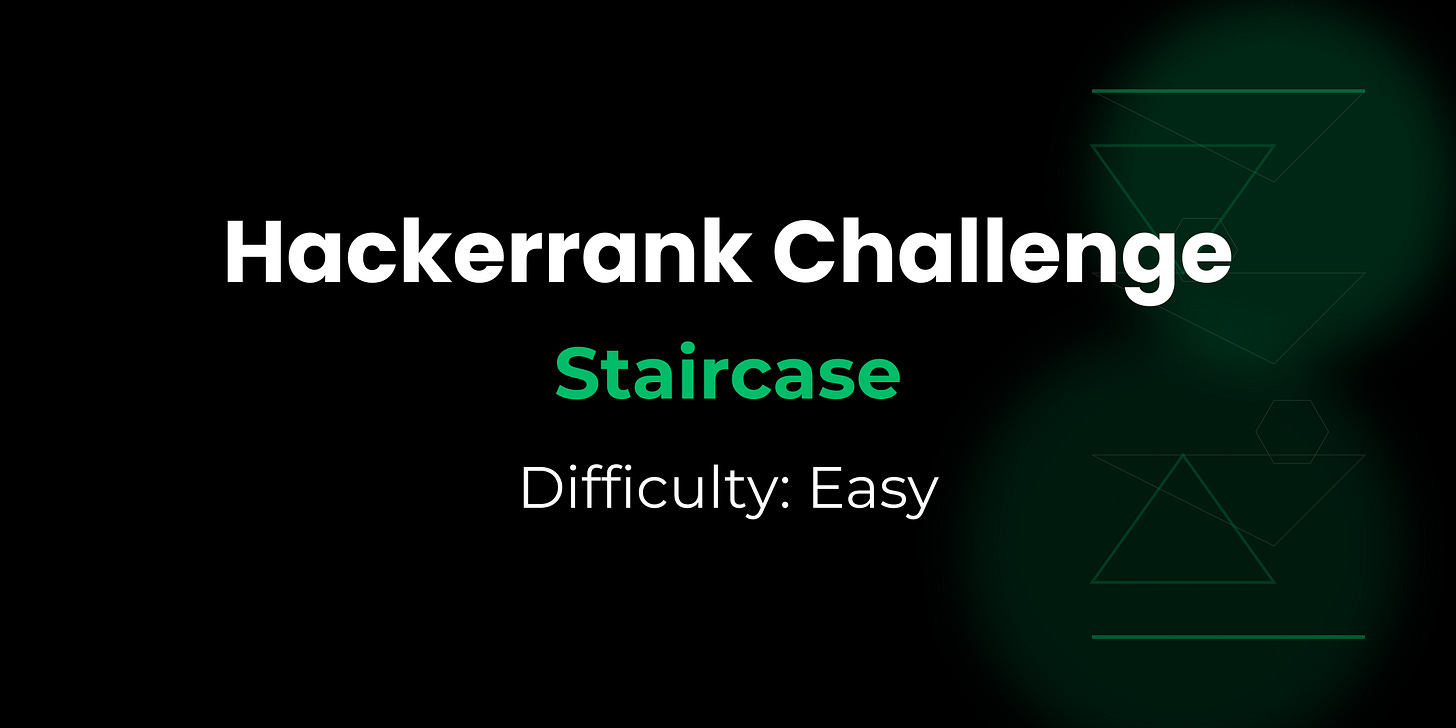Hackerrank Challenge: Staircase Problem
Exploring Swift and Dart approaches to tackle a common coding challenge—revealing insights on string manipulation and problem-solving strategies in both languages.
Today, we'll tackle HackerRank's Staircase problem using both Swift and Dart. This problem is a great way to understand how different languages handle string manipulation and pattern printing.
The Problem
Consider a staircase of size n = 4:
#
##
###
####The task is to create a right-aligned staircase pattern using # symbols, where the base and height are both equal to n.
Solution in Swift
Swift's string handling capabilities combined with nested loops provide a straightforward solution:
func staircase(n: Int) {
for index in 1...n {
for _ in 1...(n-index) {
print(" ", terminator: "")
}
for _ in 1...index {
print("#", terminator: "")
}
print()
}
}Breaking Down the Swift Solution
Outer loop
(index in 1...n): Controls the number of rowsFirst inner loop
(1...(n-index)): Prints spacesUses
terminator: ""to prevent line breaksPrints
n-indexspaces for each row
Second inner loop (
1...index): Prints hash symbolsAlso uses
terminator: ""to keep symbols on same linePrints
indexnumber of hashes
Final
print()adds the necessary line break
The terminator: "" parameter in Swift's print function is crucial here as it prevents automatic line breaks, allowing us to build each line character by character.
Solution in Dart
Here's how we solve the same problem in Dart:
void staircase(int n) {
for (int index = 1; index <= n; index++) {
stdout.write(" " * (n - index));
stdout.write("#" * index);
print("");
}
}Breaking Down the Dart Solution
Single loop structure controlling row count
stdout.write()for printing without line breaksUsing Dart's string multiplication operator:
" " * (n - index)creates spaces"#" * indexcreates hash symbols
print("")adds the line break
Dart's string multiplication operator * makes the code more concise compared to nested loops.
Time & Space Complexity
Both implementations have:
Time Complexity: O(n²)
Swift: Due to nested loops
Dart: Hidden in string multiplication
Space Complexity: O(1)
Both solutions print directly without storing the pattern
Conclusion
While both solutions solve the same problem, they showcase different programming paradigms:
Swift's solution is more imperative, with explicit control over each character
Dart's solution is more declarative, leveraging language features for string manipulation
Each approach has its merits:
Swift's solution might be easier to modify for different patterns
Dart's solution is more concise and potentially easier to maintain
Happy coding! 🚀
If you enjoyed this comparison, follow for more programming challenges solved. Next, we'll tackle another HackerRank classic!


